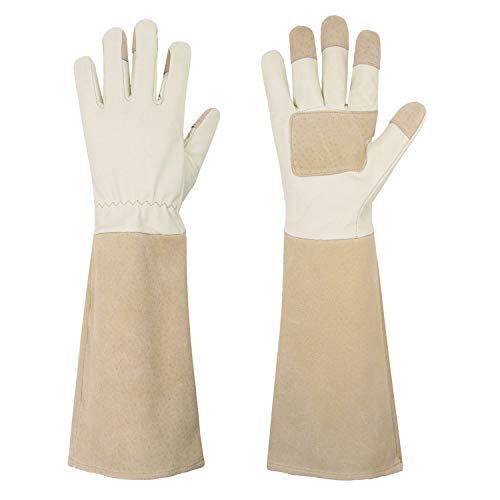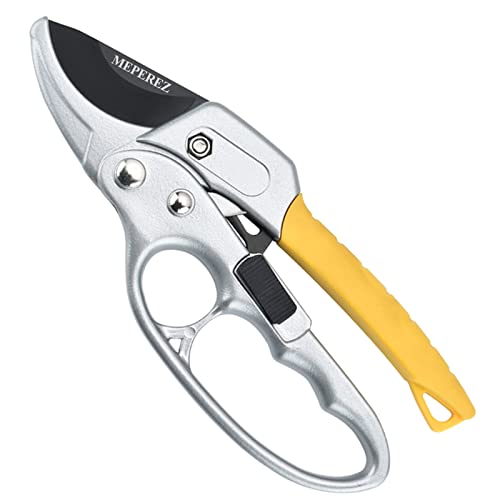7 Things to Prune in March — Cut These Back Now to Revive "Woody" Plants and Shape Your Spring Garden
The garden is waking up from winter and it's time to get these plants into shape by sprucing them up before summer
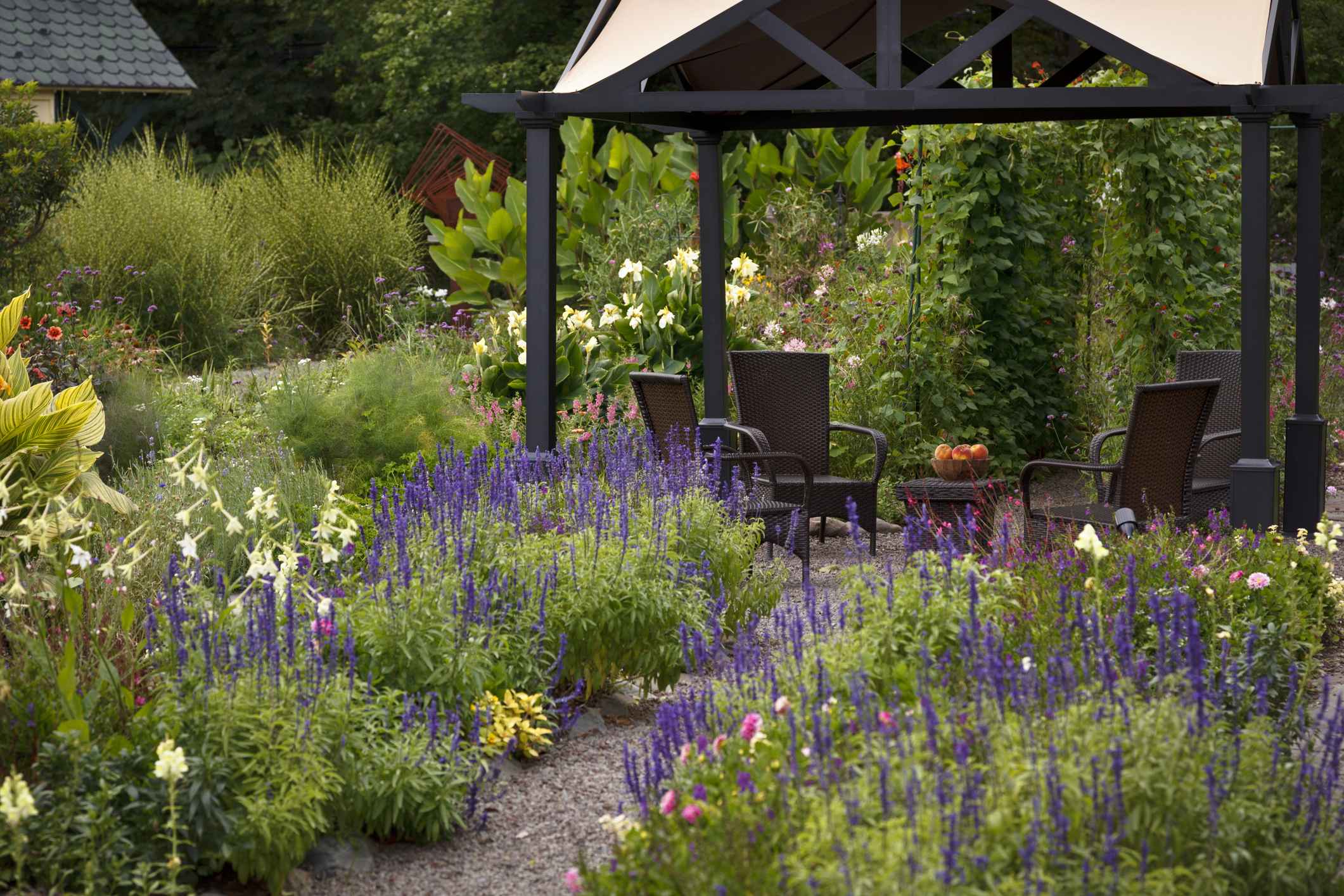
As the garden starts to wake up in March it's a great time to take stock with some gentle pruning and reshaping of plants that are in need of attention. The trick is to get in before the new foliage unfurls (evergreens aside), and the joy of pruning at this time of year is that you can see exactly what needs doing to rejuvenate shrubs.
While they are still in 'winter' mode it's also a good time to review the overall size of plants and reduce accordingly without losing any of the gorgeous flowering or leafy branches that come later in the season. You might even free up some space to squeeze in some new spring planting in a modern garden.
With the focus on plants that are popular choices for small urban yards and container gardens, we've chosen 7 varieties that can be transformed by pruning shears in March to get them in shape for summer.
7 plants that benefit from being pruned in March
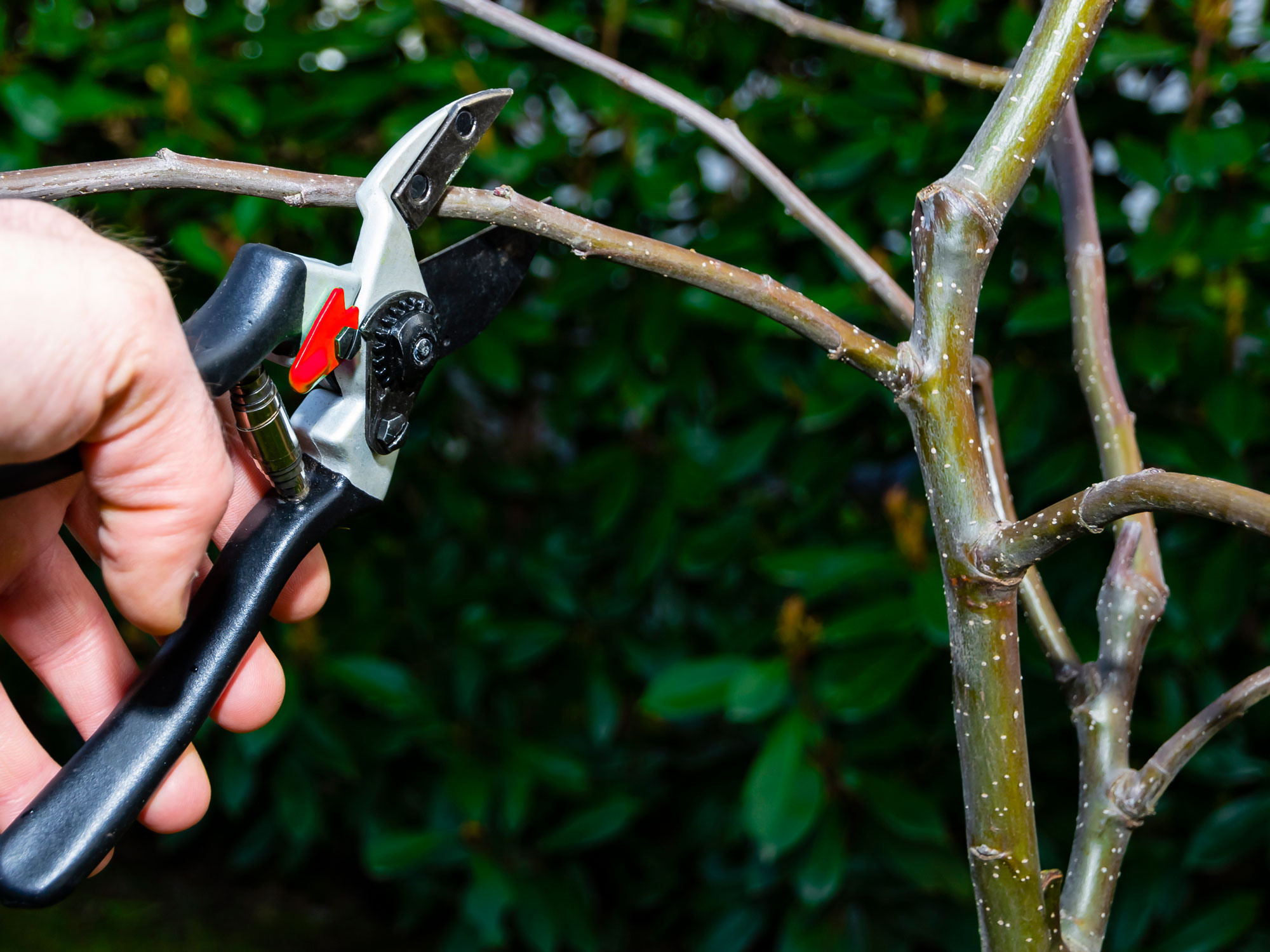
'Spring is a great time to prune woody plants as it will trigger vigorous flushes of new growth,' says horticulturist Christina Chung of Fluent Garden. 'It's also the time for rejuvenating more mature plants, since many will respond by sending out fresh growth. If you want to encourage plants to bush out and provide more new shoots and leaves, pruning in spring is the ideal time.'
A note of caution: if you live in an area that gets late cold snaps it's best to avoid pruning in March. If your plant pushes out new growth shortly after pruning it can be severely damaged by the cold. So keep an eye on the weather forecast until it's safe to start pruning.
1. Crepe myrtle
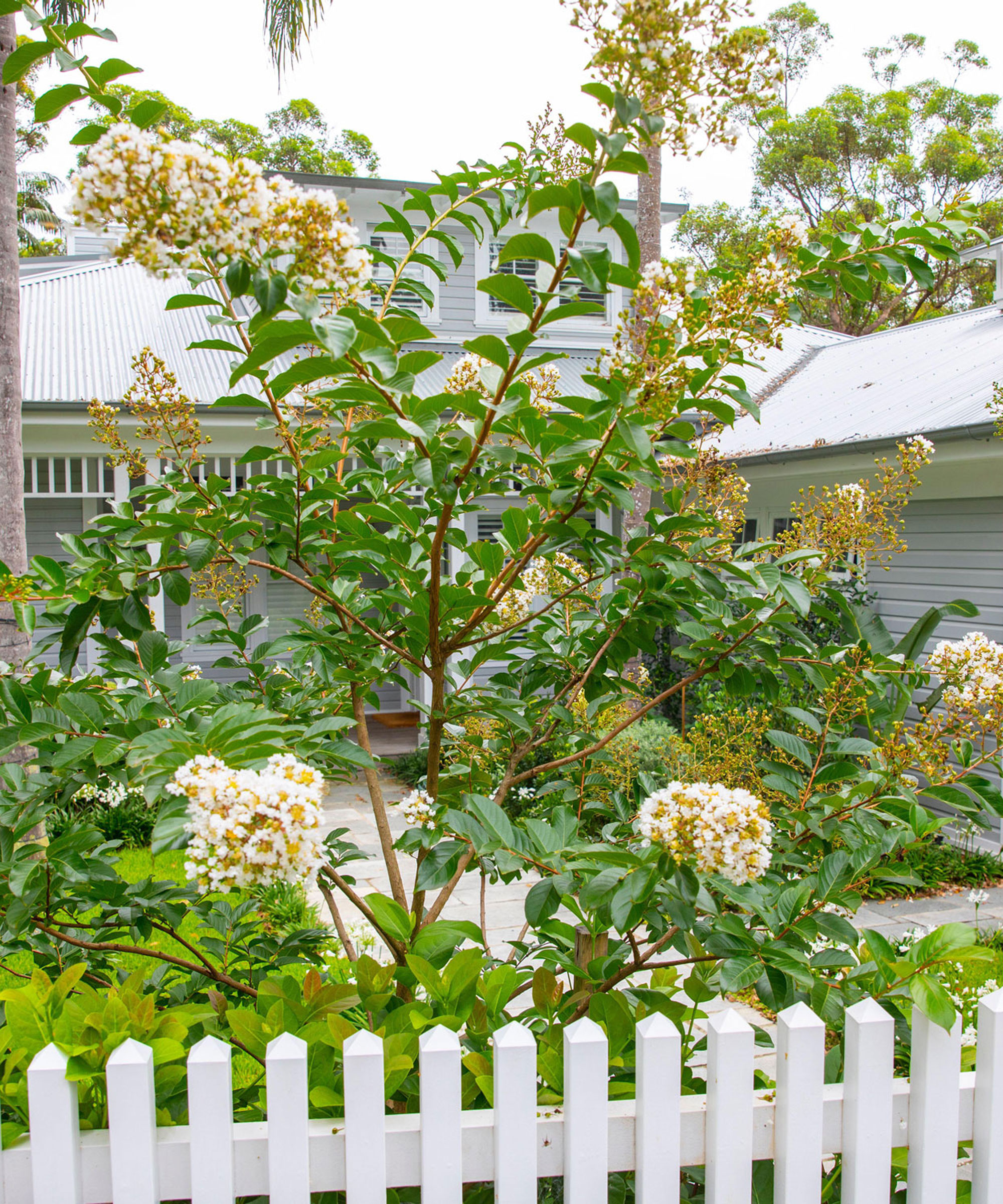
Pruning this multi-stemmed shrub (or small tree if you're growing it that way) is important to keep it shapely and flowering prolifically. Late winter and early spring is a great time to prune crepe myrtle as you can see the branches clearly, which will still be leafless at this time. This shrub blooms on new growth, so pruning now will increase the amount of flowers you get.
Start at the base and work your way up using bypass pruners like these from Amazon to cut any healthy, living parts of the plant. Remove any suckers that may have appeared around the base of the bush that will eventually grow into trees themselves, especially if you have a small backyard. Pulling them out now will help to keep your crepe myrtle in shape.
Move on to the center of the bush and cut any crossing, rubbing, and dead branches. Always cut back to another branch, to just above an outward-facing bud on a branch.
2. Lavatera
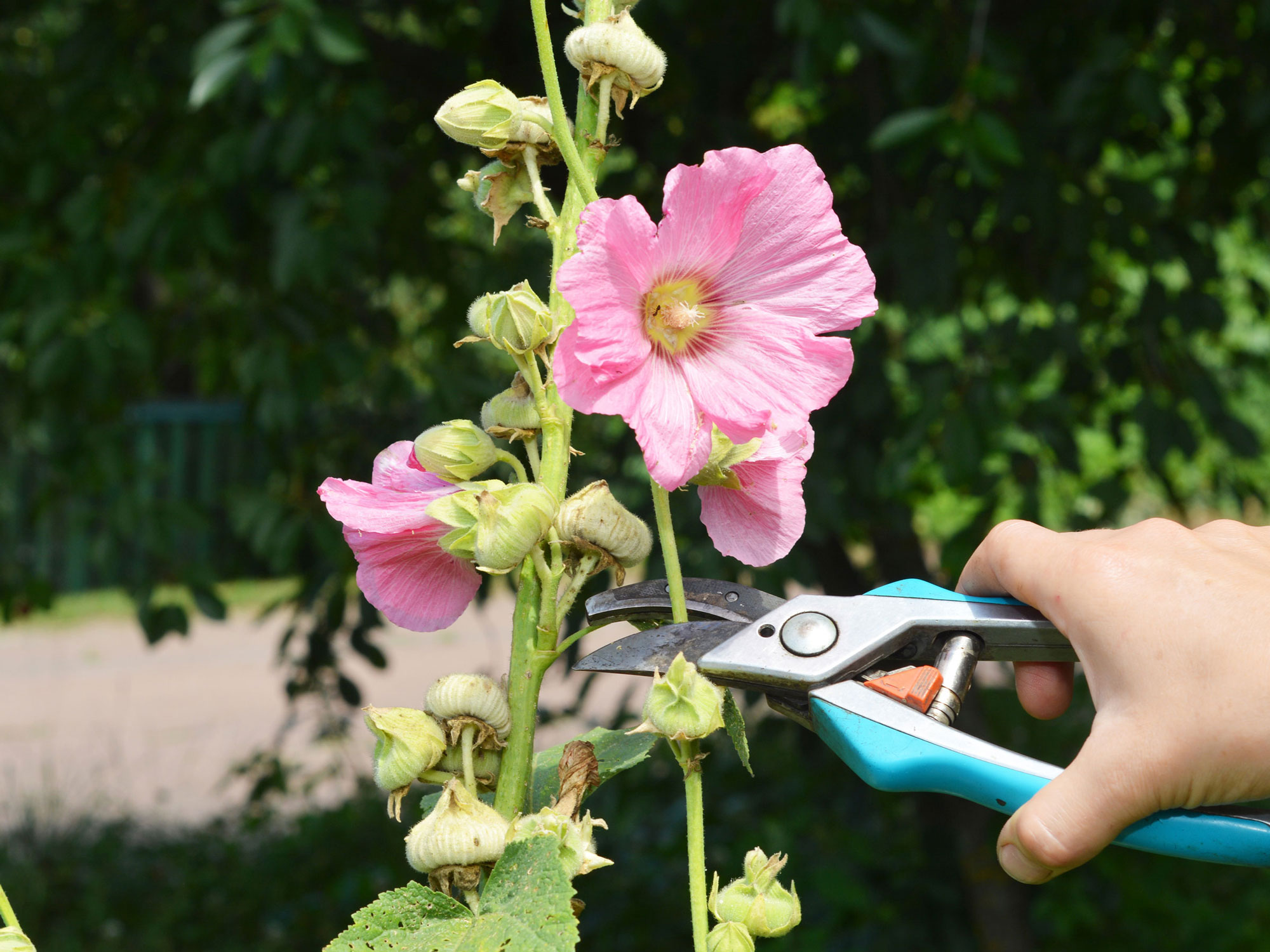
Fast-growing lavatera is a favorite in urban gardens as a quick way to get masses of flowers, especially the compact varieties like ‘Barnsley Baby’, which only grow 2-3 feet high and thrive equally in small yards or containers.
Pruning lavatera bushes is key to getting plenty of blooms, and the best time to do this is in spring after the last frost and before the new shoots start bursting through, as this variety flowers on the new growth. Leave any stems that already have new shoots developing, apart from snipping off any dead wood above the shoots.
Cut out all dead, damaged, and woody stems, starting at the base of the plant, and aim to reduce the overall size of the bush by around a third. Be sure to step back regularly to check the shape and review your renovation as you go.
3. Forsythia
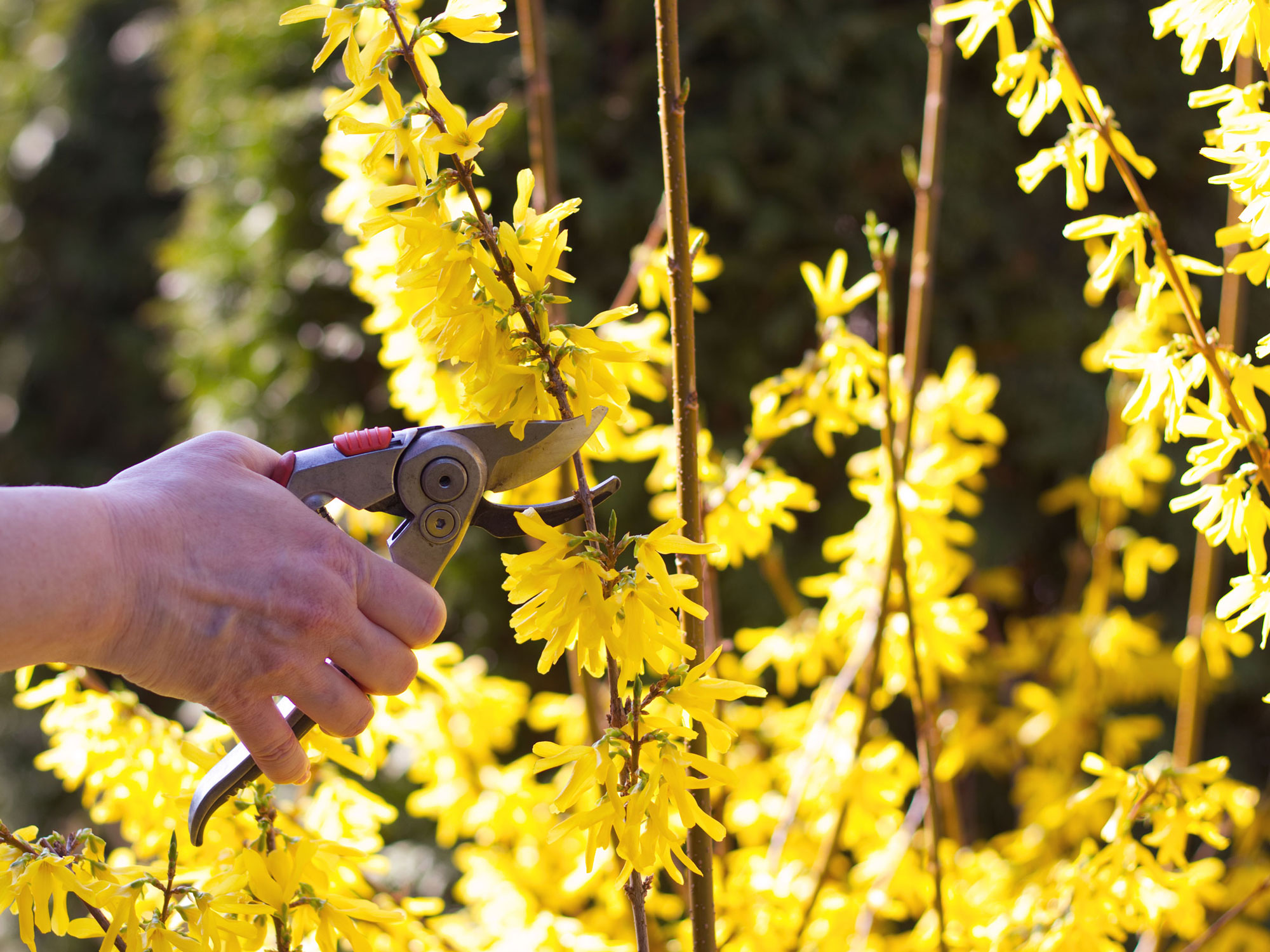
Forsythia are one of the classic early spring flowering shrubs that are perfect for bringing seasonal appeal to a modern front yard. Depending on your climate, they are generally ready for pruning in March, as soon as their brilliant yellow blooms finish flowering.
This is one shrub variety that needs reigning in regularly, as the branches form an arching shape that shoots off at angles and can look messy. So if you want to keep your forsythia neat and shapely now is the time to do some 'renewal' pruning.
Pruning forsythia in spring is the best time as the following year's flowers form on this year's wood. Take out the largest, thickest canes at ground level to let in some air, tidy up the shape of the bush and keep it healthy.
Reduce the overall size of the bush by around a third, cutting the oldest branches to the ground to encourage fresh new stems, and refining the shape as you go.
4. Deciduous ornamental grasses

Pruning the ornamental grass miscanthus - it's always a good idea to wear gloves
Many ornamental grasses add structure and interest to the winter yard but by March are looking decidedly tired, dry and brown. The perfect time to cut many of them back is when late winter begins to give way to early spring, before the first new green shoots appear. Otherwise your grass will be a mish-mash of old and new growth that looks unkempt.
First establish what type of ornamental grass you have. Many varieties only need minimal pruning and cutting back, just a quick comb through to remove any dead foliage, while other types need a hard chop back to the ground to tidy them up.
Deciduous ornamental grasses that benefit from hard cutting back in spring include Miscanthus, Panicum and Calamagrostis 'Karl Foerster'. They should be trimmed to ground level before fresh growth starts to emerge. Use pruning shears and gardening gloves, like these from Walmart, to protect your hands.
Meanwhile evergreen grasses like Stipa gigantea, Festuca glauca, and varieties of Carex just need is a quick tidy-up in spring. To keep them looking good simply comb through to remove any dead foliage and snip off any dead flower stems.
Semi-evergreen grasses such as Stipa tenuissima usually keep their foliage right through winter. Treat them like evergreens, combing and pulling out any dead leaves. If they die right back after a cold winter then chop them down in the same way you would deciduous grasses.
5. Smoke bush
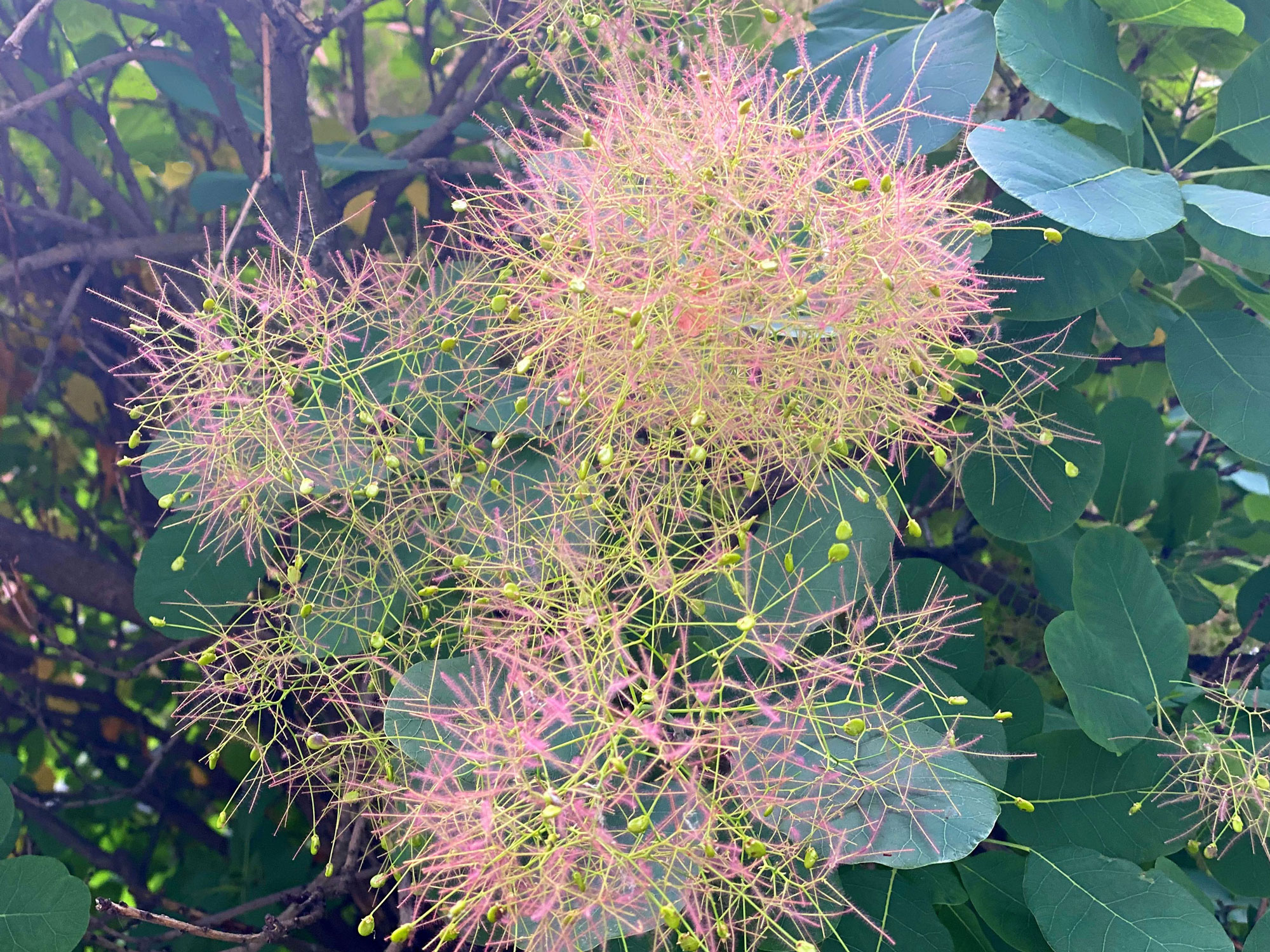
These easy-care shrubs (also known as Cotinus coggygria) with their beautiful light and fluffy purple-pink plumes are great for a low maintenance garden, but will always benefit from a quick reshape. Alternatively if you have a mature bush it might need cutting back hard in spring, according to its condition. They also need good air circulation, so it's a great opportunity to remove any dead or damaged branches to let some space into the heart of the shrub.
If you want your smoke bush to be tree shaped, prune away all but one main stem, and keep an eye around the base to cut back any stems that reappear. You can also encourage a bushier shrub by cutting all the stems down to around 8 inches above ground level in late winter when your plant is a couple of years old.
If you have included a smoke bush in your yard design as a specimen plant be sure to give it a little attention with the pruning shears to keep it looking good all year round.
6. Lavender bushes
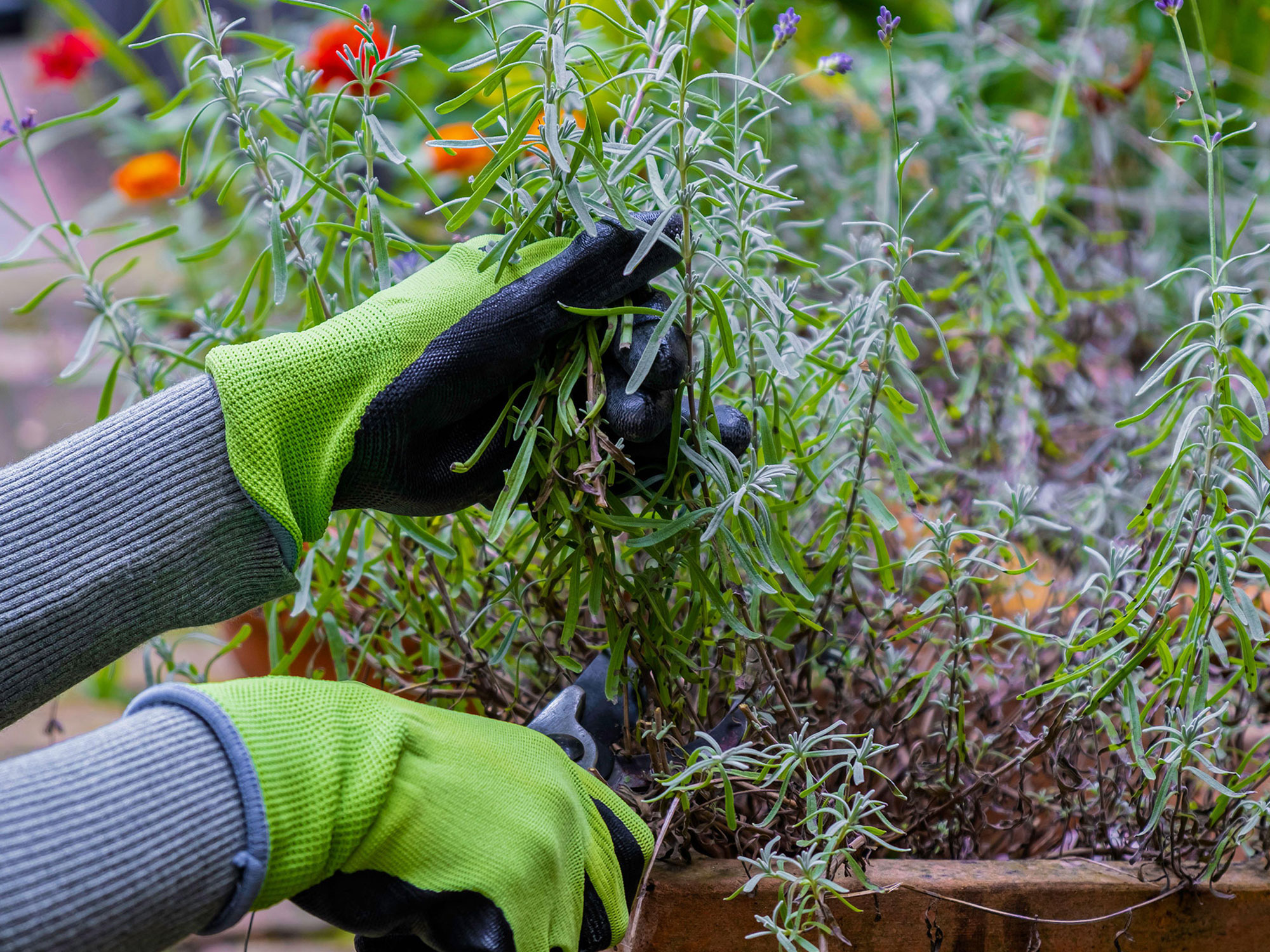
If you're wondering when to prune lavender, now's a good time to start. Ideally, lavender should be pruned twice a year, once in late summer and once in spring. This will keep your plants vigorous and healthy, with a good display of flowers in summer.
Now is the time to tackle the job, especially if you forgot to prune your lavender bushes in fall. Spring is when lavender is pruned back harder to encourage fresh new growth. You should do this early in the season, so March is ideal. Cut lavender plants back hard but leave the woody stems intact.
'Lavender has woody bases to its stems, so do not cut back into these parts as you risk killing it,' says plant expert Jenny Rose Carey. 'Instead, trim stems after flowering in summer then neaten up the straggly stems in spring once new growth has begun.'
Cut stems around 2-3 inches above the woody base, into the leafy section of the stem. Prune handfuls of stems at a time, with the aim of creating an attractive rounded shape by trimming the outer stems a little shorter than the inner stems. Any dead or diseased branches should be completely removed, which also allows air into the heart of the plant.
7. Nandina domestica (heavenly bamboo)
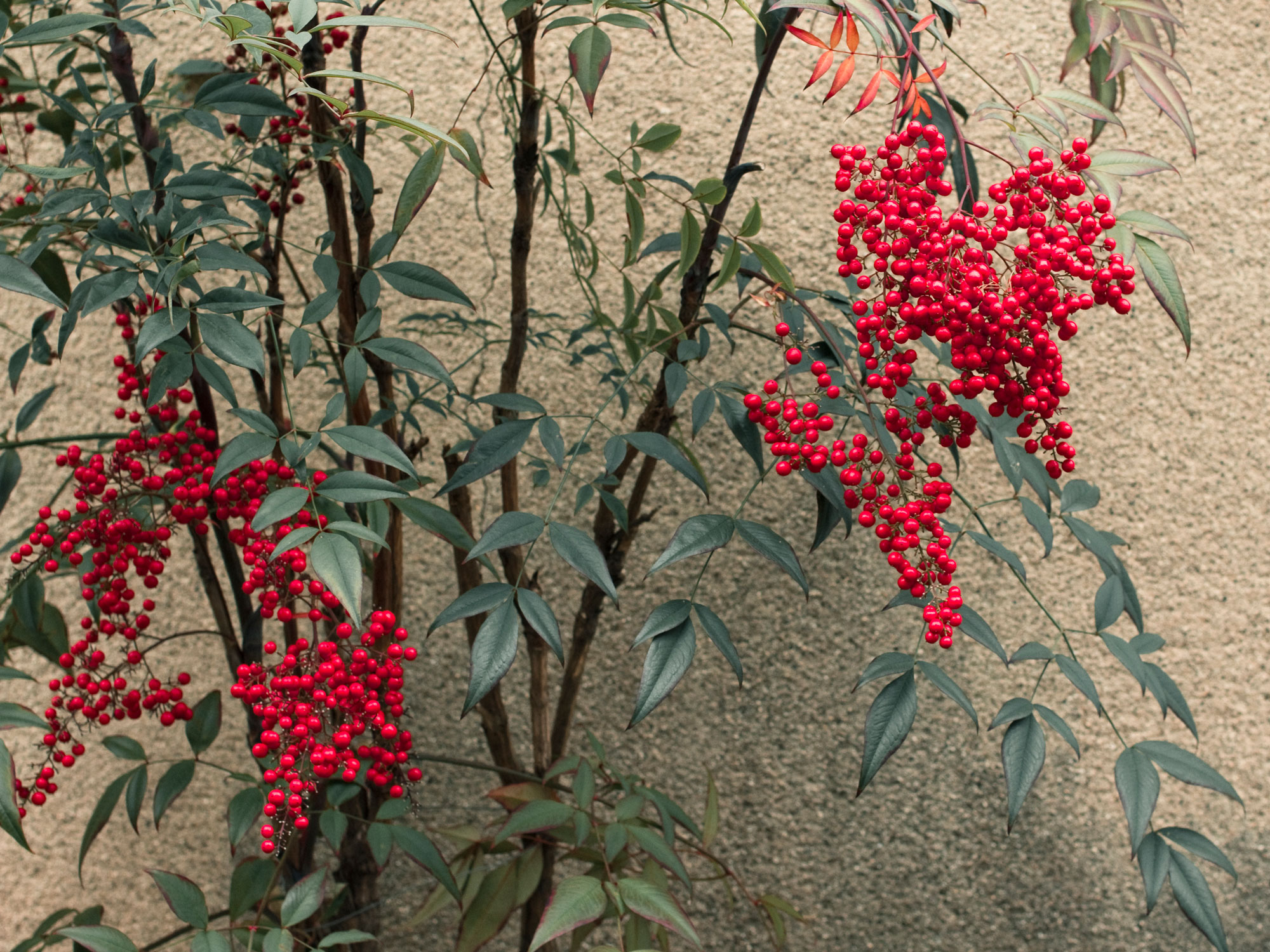
Gorgeous evergreen Nandina generally doesn't need a lot of pruning. Just trim off any brown leaves or dead branches, or the occasional wayward stem, when you see them to keep your plant looking good.
Sometimes Nandina needs a little more work if you have ended of with lots of unsightly bare stems with all the growth at the top of the plant. This low-maintenance year-round beauty can sometimes be in need of restorative pruning if it's gone 'leggy' like this, and March is the perfect time for carrying out the work.
The simplest pruning technique is to cut around a third of the stems to the ground. This will result in a much better shaped, bushier plant once the new stems grow, and bring your Nandina back to star status.
Be The First To Know
The Livingetc newsletters are your inside source for what’s shaping interiors now - and what’s next. Discover trend forecasts, smart style ideas, and curated shopping inspiration that brings design to life. Subscribe today and stay ahead of the curve.
Lifestyle journalist Sarah Wilson writes about flowers, plants, garden design and trends. She has studied introductory garden and landscape design and floristry, and also has an RHS Level 2 qualification in the Principles of Plant Growth and Development. In addition to homesandgardens.com and livingetc.com she's written for gardeningetc.com, Real Homes, Modern Gardens and Country Homes & Interiors magazines. Her first job was at Elle magazine, during which time a trip to the beautiful La Colombe d'Or in St-Paul-de-Vence led to an interest in writing about all things botanical. Later as lifestyle editor at Country Homes & Interiors magazine the real pull was the run of captivating country gardens that were featured.
-
 Turns Out the Coolest New Café is Actually In Your Kitchen — Here's How to Steal the Style of TikTok's Latest Trend
Turns Out the Coolest New Café is Actually In Your Kitchen — Here's How to Steal the Style of TikTok's Latest TrendGoodbye, over-priced lattes. Hello, home-brewed coffee with friends. TikTok's 'Home Cafe' trend brings stylish cafe culture into the comfort of your own home
By Devin Toolen Published
-
 5 Bathroom Layouts That Look Dated in 2025 — Plus the Alternatives Designers Use Instead for a More Contemporary Space
5 Bathroom Layouts That Look Dated in 2025 — Plus the Alternatives Designers Use Instead for a More Contemporary SpaceFor a bathroom that feels in line with the times, avoid these layouts and be more intentional with the placement and positioning of your features and fixtures
By Lilith Hudson Published
